Borealis

31 Oct-1 Nov 2024
In association with Part of





31 Oct-1 Nov 2024
In association with Part of



Part of Nordic Music Days Glasgow
Thursday 31 October, 7.30pm, The Queen's Hall, Edinburgh
* Friday 1 November, 7.30pm, City Halls, Glasgow
CAPPERAULD Death in a Nutshell
HILLBORG Viola Concerto (Scottish Premiere)
Interval of 20 minutes
ISAKSSON Flows (Tornio) (Scottish Premiere)
MACMILLAN Symphony No 2
Andrew Manze Conductor
Lawrence Power Viola
Rowan McIlvride DJ

* This performance will be recorded for the BBC ‘Radio 3 In Concert’ series, due for broadcast on 6 November 2024.

In association with
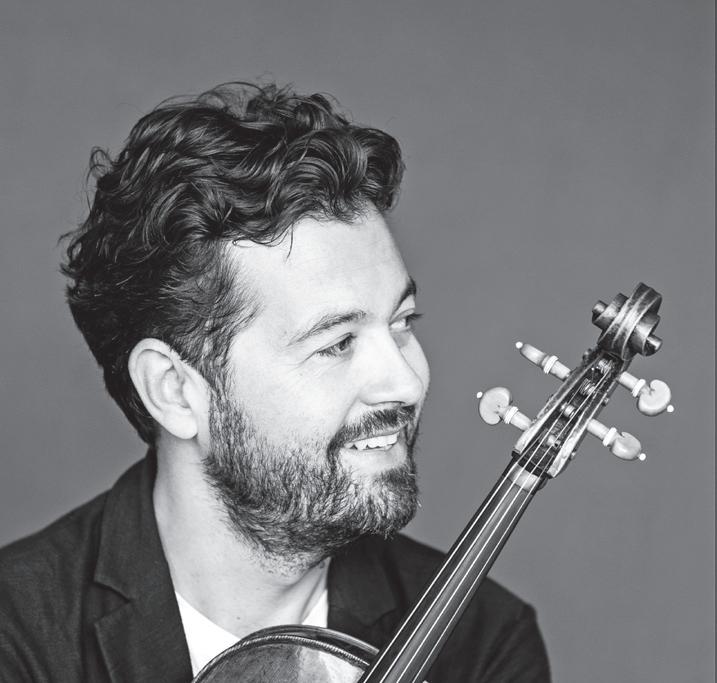
4 Royal Terrace, Edinburgh EH7 5AB
+44 (0)131 557 6800 | info@sco.org.uk | sco.org.uk
The Scottish Chamber Orchestra is a charity registered in Scotland No. SC015039. Company registration No. SC075079.
THANK YOU
Our Principal Conductor’s Circle are a special part of our musical family. Their commitment and generosity benefit us all – musicians, audiences and creative learning participants alike.
Annual Fund
James and Patricia Cook
Visiting Artists Fund
Colin and Sue Buchan
Harry and Carol Nimmo
Anne and Matthew Richards
International Touring Fund
Gavin and Kate Gemmell
Creative Learning Fund
Sabine and Brian Thomson
Conductor Emeritus Joseph Swensen
Donald and Louise MacDonald
Chorus Director Gregory Batsleer
Anne McFarlane
Principal Second Violin
Marcus Barcham Stevens
Jo and Alison Elliot
Second Violin Rachel Smith
J Douglas Home
Principal Viola Max Mandel
Ken Barker and Martha Vail Barker
Viola Brian Schiele
Christine Lessels
Viola Steve King
Sir Ewan and Lady Brown
Principal Cello Philip Higham
The Thomas Family
Sub-Principal Cello Su-a Lee
Ronald and Stella Bowie
American Development Fund
Erik Lars Hansen and Vanessa C L Chang
Productions Fund
Anne, Tom and Natalie Usher
Bill and Celia Carman
Anny and Bobby White
Scottish Touring Fund
Eriadne and George Mackintosh
Claire and Anthony Tait
Cello Donald Gillan
Professor Sue Lightman
Cello Eric de Wit
Jasmine Macquaker Charitable Fund
Principal Double Bass Nikita Naumov
Caroline Hahn and Richard Neville-Towle
Principal Flute André Cebrián
Claire and Mark Urquhart
Principal Oboe Robin Williams
The Hedley Gordon Wright Charitable Trust
Principal Clarinet Maximiliano Martín
Stuart and Alison Paul
Principal Bassoon Cerys Ambrose-Evans
Claire and Anthony Tait
Principal Timpani Louise Lewis Goodwin
Geoff and Mary Ball


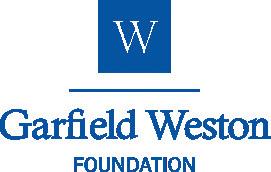
Diamond
Malcolm and Avril Gourlay
John and Jane Griffiths
James and Felicity Ivory
Robin and Catherine Parbrook
Tom and Natalie Usher
Platinum
Michael and Simone Bird
Silvia and Andew Brown
David Caldwell in memory of Ann
Dr Peter Williamson and Ms Margaret Duffy
Judith and David Halkerston
Audrey Hopkins
David and Elizabeth Hudson
Helen B Jackson
Dr and Mrs Peter Jackson
Dr Daniel Lamont
Chris and Gill Masters
Duncan and Una McGhie
Anne-Marie McQueen
James F Muirhead
Patrick and Susan Prenter
Mr and Mrs J Reid
George Ritchie
Martin and Mairi Ritchie
Hilary E Ross
Elaine Ross
George Rubienski
Jill and Brian Sandford
Michael and Elizabeth Sudlow
Robert and Elizabeth Turcan
Alan and Sue Warner
Finlay and Lynn Williamson
Ruth Woodburn
William Zachs
Gold
Peter Armit
Adam Gaines and Joanna Baker
John and Maggie Bolton
Elizabeth Brittin
James Wastle and Glenn Craig
Jo and Christine Danbolt
James and Caroline Denison-Pender
Andrew and Kirsty Desson
David and Sheila Ferrier
Chris and Claire Fletcher
Dr J W E Forrester
James Friend
Iain Gow
Margaret Green
Christopher and Kathleen Haddow
Catherine Johnstone
Gordon Kirk
Janey and Barrie Lambie
Mike and Karen Mair
Roy and Svend McEwan-Brown
John and Liz Murphy
Maggie Peatfield
Charles Platt
Alison and Stephen Rawles
Andrew Robinson
Olivia Robinson
Anne McAlister and Philip Sawyer
Irene Smith
Dr Jonathan Smithers
Ian S Swanson
Ian and Janet Szymanski
John-Paul and Joanna Temperley
Bill Welsh
Robert Mackay and Philp Whitley
Catherine Wilson
Neil and Philippa Woodcock
G M Wright
Silver
Roy Alexander
Fiona and Neil Ballantyne
The Batsleer Family
Jack Bogle
Jane Borland
Michael and Jane Boyle
Mary Brady
John Brownlie
Laura Buist
Robert Burns
Kate Calder
Sheila Colvin
Lorn and Camilla Cowie
Lord and Lady Cullen of Whitekirk
Adam and Lesley Cumming
Dr Wilma Dickson
Sylvia Dow
Raymond Ellis
Dr and Mrs Alan Falconer
Sheila Ferguson
Malcolm Fleming
Dr William Irvine Fortescue
Dr David Grant
Andrew Hadden
J Martin Haldane
Ronnie and Ann Hanna
Roderick Hart
Norman Hazelton
Ron and Evelynne Hill
Philip Holman
Clephane Hume
Tim and Anna Ingold
David and Pamela Jenkins
Margaret Mortimer and Ken Jobling
Julie and Julian Keanie
Professor Christopher and Mrs Alison Kelnar
Dr and Mrs Ian Laing
Graham and Elma Leisk
Geoff Lewis
Christopher and Molly Ludlam
Dorothy A Lunt
Vincent Macaulay
James McClure in memory of Robert Duncan
Gavin McCrone
Brian Miller
Alistair Montgomerie
Andrew Murchison
Pamela Andrews and Alan Norton
David and Tanya Parker
John Peutherer in memory of Audrey Peutherer
James S Potter
Timothy Barnes and Janet Sidaway
Catherine Steel
Takashi and Mikako Taji
Douglas and Sandra Tweddle
C S Weir
Susannah Johnston and Jamie Weir
We are indebted to everyone acknowledged here who gives philanthropic gifts to the SCO of £300 or greater each year, as well as those who prefer to remain anonymous.
We are also incredibly thankful to the many individuals not listed who are kind enough to support the Orchestra financially on a regular or ad hoc basis. Every single donation makes a difference.
Become a regular donor, from as little as £5 a month, by contacting Hannah Wilkinson on 0131 478 8364 or hannah.wilkinson@sco.org.uk.
“A crack musical team at the top of its game.”

HM The King
Patron
Donald MacDonald CBE
Life President
Joanna Baker CBE
Chair
Gavin Reid LVO
Chief Executive
Maxim Emelyanychev
Principal Conductor
Andrew Manze
Principal Guest Conductor
Joseph Swensen
Conductor Emeritus
Gregory Batsleer
Chorus Director
Jay Capperauld
Associate Composer
Our Musicians
Information correct at the time of going to print
First Violin
Eva Aronian
Tijmen Huisingh
Alexandra Lomeiko
Kana Kawashima
Aisling O’Dea
Amira Bedrush-McDonald
Sarah Bevan Baker
Catherine James
Second Violin
Marcus Barcham Stevens
Gordon Bragg
Michelle Dierx
Rachel Smith
Niamh Lyons
Stewart Webster
Viola
Max Mandel
Francesca Gilbert
Brian Schiele
Steve King
Cello
Philip Higham
Su-a Lee
Donald Gillan
Eric de Wit
Bass
Jamie Kenny
Toby Hughes
Flute
André Cebrián
Marta Gómez
Piccolo/Bass Flute/ Alto Flute
Marta Gómez
Oboe
Fraser Kelman
Katherine Bryer
Cor Anglais
Katherine Bryer
Clarinet
Maximiliano Martín
William Stafford
Bass Clarinet
William Stafford
Alto/Soprano Saxophone
Lewis Banks
Bassoon
Cerys Ambrose-Evans
Alison Green
Marta Gómez
Sub-Principal Flute
Contrabassoon
Alison Green
Horn
Chris Gough
Jamie Shield
Trumpet
Peter Franks
Brian McGinley
Timpani
Alasdair Kelly
Percussion
Louise Lewis Goodwin
Colin Hyson
Alasdair Kelly
Piano
Peter Evans
Harp
Eleanor Hudson

CAPPERAULD (b. 1989)
Death in a Nutshell (2021)
1. Malleus Dei (in the Parsonage Parlour)
2. The Colossus (in the Kitchen)
3. A Drowned Sorrow (in the Dark Bathroom)
4. Interlude pour l’esprit de l’escalier (on the Stairs)
5. The Family Plot (in the Three-Room Dwelling)
6. Hanging upon your every word (in the Attic)
HILLBORG (b. 1954)
Violin Concerto (2021) (Scottish Premiere)
ISAKSSON (b. 1956)
Flows (Tornio) (2021) (Scottish Premiere)
MACMILLAN (b. 1959)
Symphony No 2 (1999)
I. Cumnock Fair
II. Shambards: Crotchet
III. Shamnation: Allegro (Tempo di reel)
Just as Scotland’s southern land border has played a central role in the country’s history and sense of identity, so too has the nation long gazed further north (or maybe northeast), across the water, for trade, culture and a feeling for who and what it is. Famously, for example, Shetland is closer to Bergen in Norway than it is to Edinburgh, and the islands’ inhabitants cherish and celebrate that Nordic flavour to their character.
So in many ways, it’s no surprise to find Scotland as part of Nordic Music Days, one of the world’s longest-standing festivals of contemporary music. Nonetheless, it’s only the third time in Nordic Music Days’ 136-year history – it was founded way back in 1888 by the Council of Nordic Composers, and long curated by composers and creators themselves – that the event has taken place outside the Nordic countries themselves. Tonight’s concert (part of Scotland’s 2024 hosting of the event) represents our country looking confidently outward, both celebrating its own culture and embracing the music of our northerly neighbours.
Scottish composers Sir James MacMillan and Jay Capperauld both have strong connections with the Scottish Chamber Orchestra. They’re both SCO Associate Composers – past and present – and wrote the pieces heard in tonight’s concert specifically for the Orchestra. Anders Hillborg and Madeleine Isaksson come from Sweden, although Isaksson has long lived in France, and their respective pieces tonight offer contrasting perspectives on that country’s current musical concerns and passions.
So much for the broad context. Let’s focus on the music itself, and the musicians who’ve created it. Tonight’s first composer, Jay Capperauld, was born in Ayrshire and studied
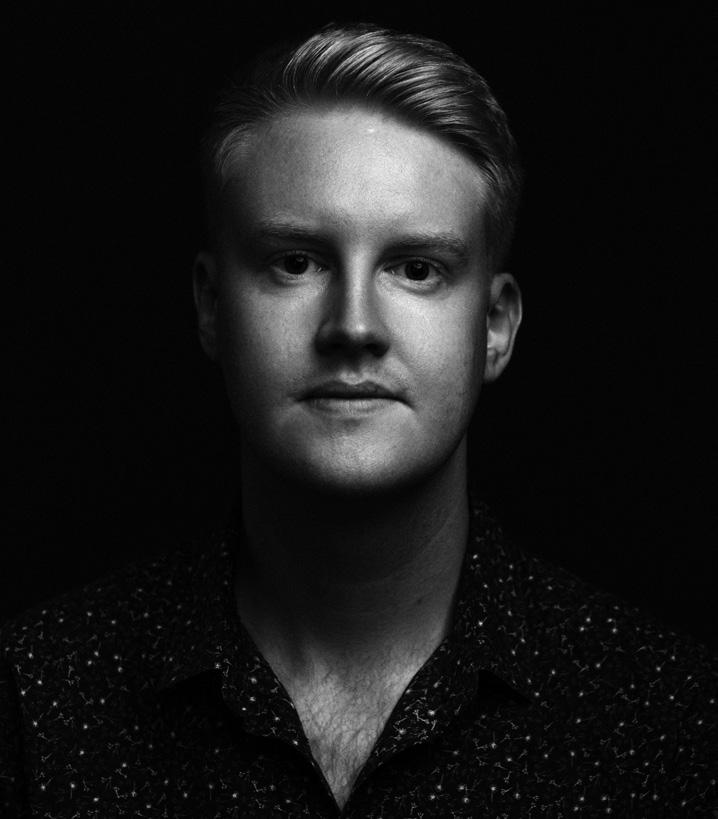
Death in a
Nutshell
focuses onsixofLee’sgrislyNutshell Studiesinanattemptto representsixdifferentcrime scenes as musical miniatures thathintatavarietyof elaborate clues and evidence thatformstheirpotential solutions.
at Glasgow’s Royal Conservatoire of Scotland, and he’s written music for many Scottishbased ensembles as well as international performers. He was also commissioned to compose Schiehallion! for King Charles III’s Honours of Scotland celebrations in July 2023 at St Giles Cathedral, Edinburgh. He’s been the SCO’s Associate Composer since 2022, and has already composed extensively for the Orchestra, including the concert-long theatrical work for youngsters The Great Grumpy Gaboon (premiered earlier this year, and returning in February 2025), the 50th Anniversary Season launcher The Origin of Colour, and The Night Watch for the SCO Chorus.
The SCO premiered his macabre suite Death in a Nutshell in 2021. Capperauld writes about the piece:
Death in a Nutshell is inspired by Frances Glessner Lee’s ‘Nutshell Studies of
Unexplained Death’ which are a series of 20 re-creations of real-life crime scenes that she intricately fashioned in minute detail within doll’s house-sized rooms. These macabre miniature death-scenes were painstakingly handcrafted by Lee throughout the 1940/50s as a learning tool in forensic and crime scene investigation, and often depict a domestic scenario furnished in 1940s decor in which the body of a doll (or dolls) can be found. Each diorama presents a set of clues regarding the events that led up to the doll’s demise, including witness statements and important details about the time of year and even the temperature of the room, all of which offer clues to the solution of a puzzle that can be solved from the objects found within each room. These studies have proved so successful that they are still used today, and are housed at the Maryland Medical Examiner’s Officer in Baltimore, where the true solutions are kept firmly under lock and key.

This piece focuses on six of Lee’s grisly Nutshell Studies in an attempt to represent six different crime scenes as musical miniatures that hint at a variety of elaborate clues and evidence that forms their potential solutions. The work is constructed like a house in which we promenade from room to room, starting in the parlour and wandering all the way to the attic, and where we find a deceased doll (or dolls) in each room, as well a new mystery to be solved.
This morbid tour unfolds as follows:
1. Malleus Dei (in the Parsonage Parlour):
The body of a young girl was discovered by police in a house belonging to the local church after a week-long search. The high school student, Dorothy Dennison, was sent out to buy some meat by her mother, who reported the young girl as ‘missing’ when she failed to return home in time for dinner. The market owner confirmed that Dorothy had bought a pound of Hamburg meat from his
Death in a Nutshell is inspiredbyFrancesGlessner Lee’s ‘Nutshell Studies of UnexplainedDeath’whichare a series of 20 re-creations of real-life crime scenes that she intricatelyfashionedinminute detail within doll’s house-sized rooms.
store on the morning of Monday 19th August 1946, but admitted that he did not remember which direction the girl headed upon leaving his shop. It was not until Friday 23rd August that her body was found in the parlour of an unoccupied local parsonage house. She had been stabbed, had her dress torn and received major trauma to the head. Both a knife (still stuck into her abdomen) and a hammer were found at the scene, as well as the girl’s purse along with a pound of rotting meat still wrapped in brown paper.
2. The Colossus (in the Kitchen): Mrs Barbara Barnes was found dead in the kitchen by her husband after he returned home from an errand at 5.30pm, when he discovered that both doors to the property were closed and locked. Mr Barnes peered in through the kitchen window to see his wife lying on her back amid a scene of everyday domestic rituals. A pie is fresh out the oven, the fridge door is open, and the ironing board is ready

for use. Upon inspection, the frame of the inner kitchen door has been stuffed with newspaper, and next to it a knife is found on top of a pile of laundry on a chair. Despite the appearance of activity in the room, it remains relatively tidy apart from a tablecloth that sits askew on the kitchen table underneath the window that Mr Barnes used to peer through. The body appears to have no outward trauma.
3. A Drowned Sorrow (in the Dark Bathroom): The body of a young woman, Maggie Wilson, is found by her roommate, Lizzie Miller, in the bathtub of their shared bathroom. Ms Wilson had been entertaining a couple of male friends and a lot of alcohol had been consumed that evening. After the two males left, Ms Miller heard running water and discovered Ms Wilson’s body lying face up in the bathtub with water from the tap running directly onto her face. Empty bottles are found lying next to the bathtub. Ms Wilson was thought to suffer from seizures.
4. Interlude pour l’esprit de l’escalier (on the Stairs): Mrs Ruby Davis, a middle-aged housewife, is found dead by her husband. Her body lies face down halfway up the stairs in their family home, with her head facing the lower stairs and her feet facing the upper stairs. Her husband claims they spent the previous evening at home before going to bed. He discovered her body upon waking at 5am and first phoned the family physician, who then called the police immediately.
5. The Family Plot (in the Three-Room Dwelling): On the morning of November 1st 1937, a woman named Sarah Abbott called the police to report a potential incident at her neighbour’s three-room dwelling. Inside were the bodies of Robert Judson, his wife Kate Judson and their baby Linda Mae Judson. When Robert failed to appear for his carshare at 7.35am with his neighbour and co-worker Paul Abbott, Mr Abbott drove to work alone believing that Mr Judson would
travel in his own car. Mrs Abbott explained to police that she kept an eye out for Mr Judson’s appearance, but seeing no signs of life, she went to the Judsons’ at 8.15am, where she spotted a shotgun lying in the kitchen as she looked in through the porch window – both doors to the property were locked from the inside. Mrs Abbott called the authorities in alarm. Mr Judson was found lying in his pyjamas face down on the floor of his bedroom on top of a blanket, covered in blood. His wife Sarah was found lying on her side in their double bed with a major gunshot wound to the head. There is a large blood stain on Mr Judson’s side of the mattress and their room is in disarray with bloody footprints on the carpeted floor. The kitchen seems in order; the dining table is set and it is overall neat and tidy. However, there is a shotgun lying in the middle of the room alongside a large pool of blood, and there are many bullet holes in the wall near the oven from the spray of a gunshot. In the baby’s room there is a crib where the body of Linda Mae Judson was found with a gunshot wound to the head. There is another pool of blood in this room, which is also in disarray. The window in this room is open.
6. Hanging upon your every word (in the Attic): Miss Jessie Compton, an elderly woman, is discovered hanging from the ceiling-mounted drying rack in her attic, by the milkman on December 24, 1946, at around 6am. He entered the property via the kitchen door, which was left open despite the cold and snowy weather. He surveyed the neat and undisturbed house, but eventually discovered Miss Compton’s body in the attic, the floor of which was strewn with many letters, paperwork and an upturned chair.
Leave no stone unturned, no note unscrutinised, ‘convict the guilty, clear the
innocent, and find the truth in a nutshell’, in this macabre collection of miniature pieces inspired by a dollhouse unlike any other.
From grisly crime scenes, we turn to heroism and exuberance in tonight’s next piece. Anders Hillborg is probably Sweden’s most respected and accomplished contemporary composer. A free thinker, sometimes a radical, he has a deeply individual (even idiosyncratic) approach to creating music that draws on influences as diverse as his own early musical experiences as keyboard improviser in a pop band, arch-complexicist Brian Ferneyhough, and musical mischief-maker György Ligeti. Bringing it all together, however, is a profound sense of direct, often visceral communication with the listener – something that’s clear even from the opening seconds of his 2021 Viola Concerto.
Hillborg wrote the piece specifically for tonight’s soloist, Lawrence Power, as part of Power’s ambitious Viola Commissioning Project to create a new repertoire of works for the instrument by some of today’s most pioneering international composers. Power premiered the Concerto in October 2021 in Liverpool, with tonight’s conductor, Andrew Manze, directing the Royal Liverpool Philharmonic Orchestra.
Hillborg’s intention, he’s explained, was to create a work that showcased its solo viola player as a heroic figure, rather than a musician dwelling on melancholy introspection (the character that the viola has rather unaccountably gained across many decades of music). Hillborg himself wrote: ‘With the viola, there’s a tradition of sad, “lachrymae” music. My idea was to do the complete opposite.’ Hence his 20-minute Concerto – divided across seven contrasting sections, which run without breaks – packs

Hillborg’s intention, was to create a work that showcased its solo viola player as a heroic figure, rather than a musician dwelling on melancholy introspection (the character that the viola has rather unaccountably gained across many decades of music).
enormous power into its brief duration, even if it doffs its cap to the viola’s more introspective side in its middle portion.
Frantic scrubbing figures from the soloist seem to explode from nowhere at the beginning of the Concerto’s first section, appropriately entitled ‘Rage’. They’re soon joined by the orchestral strings in similarly aggressive music, and the lower strings even attack their instruments with bamboo tubes, producing vividly percussive effects. After an unearthlysounding unison melody shared between solo viola and a soprano saxophone, the music begins to calm in the Concerto’s second section, ‘Fade’. Indeed, the piece seems about to grind to a halt in the third section, ‘Still’: the viola climbs to a very top of its range, where it attempts to sing a slow-moving, lyrical melody, accompanied by glassy harmonies from the orchestral strings. If the music sounds out of tune here, that’s intentional: the vast chords intoned by the strings include notes
you’d struggle to find on a conventional piano keyboard.
Hillborg’s fourth section doesn’t have a title, but there’s a sense of the music being in flux: the woodwind introduce more agitated figures, while the strings add some magicalsounding sliding tones, leading to a lengthy solo cadenza from the violist, which reestablishes some of the energy and drive of the Concerto’s furious opening.
The cadenza is silenced, however, by some enigmatic piano tones, marking the start of Hillborg’s fifth section, ‘Odobenus Lachrymae’. It’s here that the composer overtly acknowledges the viola’s traditional introspection, though it’s not entirely clear how seriously he means us to take it. After a passage where the soloist is specifically asked to imitate the otherworldly sounds of a theremin, one of the earliest electronic instruments, there’s an unmistakable
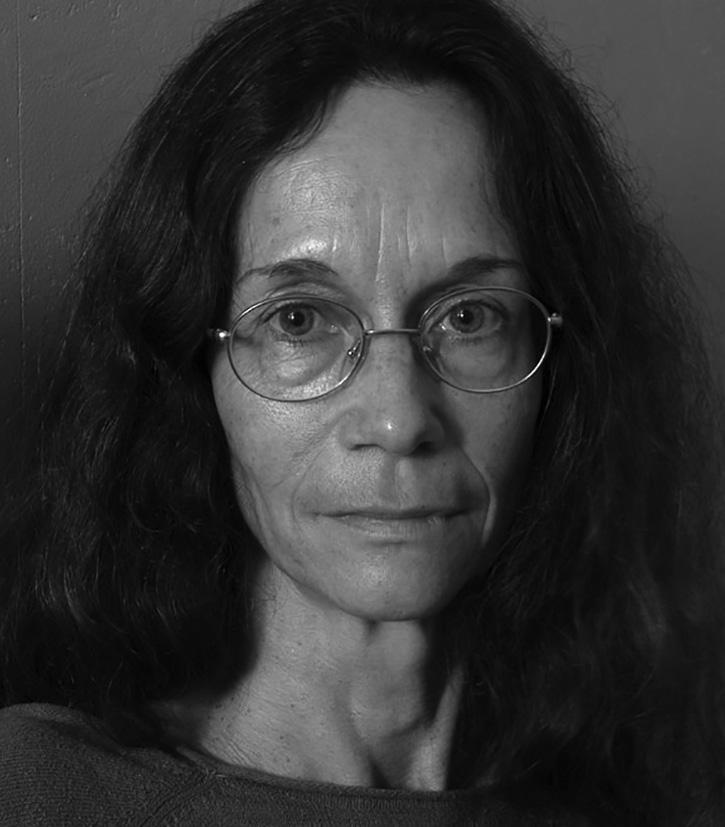
Her music often focuses on the qualities of sound itself, and its minute, intricate internal fluctuations, exploring fundamental contrasts between light and darkness, heaviness and weightlessness, density and transparency.
quotation from – can that really be a Beatles song? (Translating the section’s Latin title might offer a clue.)
Kicked off by the pop reference, Hillborg’s penultimate section, ‘Ascension’, represents a gradual climb from the soloist and orchestral strings from the bottom to very top of their ranges – using a clever aural illusion to make it seem like the music is perpetually rising ever higher. A few woodwind interjections give the soloist the energy to launch into their own faster music. To finish, Hillborg takes us back to the opening ‘Rage’, with a return for the percussive bamboo tubes, and the viola soloist – whose music is marked ‘insanely furious’ in the score – leading the orchestra to the Concerto’s noisy conclusion.
From breathless theatrical exuberance, we move to a very different sound world for tonight’s next piece. Hillborg’s compatriot Madeleine Isaksson has lived and worked
near Paris since her postgraduate studies in the city in the early 1990s. Her music often focuses on the qualities of sound itself, and its minute, intricate internal fluctuations, exploring fundamental contrasts between light and darkness, heaviness and weightlessness, density and transparency. Like Hillborg, Isaksson has acknowledged influences from a wide spectrum of contrasting composers, from Ferneyhough and Xenakis through to Andriessen, Feldman and Scelsi.
Isaksson’s Flows (Tornio) was premiered in Piteå, Sweden, on 1 September 2021 by the Norrbotten Chamber Orchestra. She writes about the work:
Flows (Tornio) was commissioned by Norrbotten Chamber Orchestra to celebrate the 400th anniversary of the town of Tornio in 2021, a three-commission project that also included two other towns in northern Sweden:
Piteå and Luleå, to build a jubilee-suite in three parts, Flows (Tornio) being the second part.
Now Finnish, Tornio forms a cross-border town with the Swedish town of Haparanda, situated at the mouth of the River Torne at the tip of the Gulf of Bothnia.
Flows is inspired by all the water coming from the far north via three border rivers between Finland and Sweden: the rivers Könkämäeno, Muonio and Torne, and falls out in the Gulf of Bothnia. These northern rivers are frozen for several months in winter and begin to carry ice from early May (by Tornio) to early June (at Torne Lake), sometimes with dramatic breakups and floods.
Accordingly, there’s a gradual accumulation of musical material throughout the course of Isaksson’s brief work, conjuring a glittering, iridescent soundscape that glides into a new sense of openness, perhaps as Isaksson’s icecarrying waters reach the sea.
Undoubtedly Scotland’s most prominent living composer, Sir James MacMillan has had a long and fruitful relationship with the SCO. The Orchestra has premiered almost 20 of his works since his first connections with the ensemble in the 1980s, and during his years as Associate Composer, he wrote several of his best-known works, including the percussion concerto Veni, Veni, Emmanuel He continues to both compose for and conduct the SCO: in September 2022, for example, Nicola Benedetti gave the first performances of his Second Violin Concerto with the Orchestra.
MacMillan wrote his Symphony No 2 in 1999, conducting the SCO in its premiere in December that year. He writes about the piece:
This work, composed in 1999, is in three movements and lasts about 25 minutes. It is dedicated to the writer and fellow Ayrshireman Andrew O’Hagan.
The first movement is short and preparatory. It opens with the first of many mournful, tolling bell strokes and is followed by a mounting clamour of high woodwind calls. This then merges with the pitter-patter ‘rain-drops’ of high pizzicato strings before settling to the main substance of the movement. This is carried by a sad chorale on brass (and later other winds), punctuated by rippling flurries on flutes and clarinets, and brittle repeated chords high on the harp. These various ideas are gathered up into a more expressive statement before the music subsides and fades.
The sense of elegy and desolation is continued into the more extended second movement, but this time there is more –ferocity and violence. The music progresses and develops as a series of ruminative fragments and memories of previously stated material – melancholic two-note figures (which come from the bell idea), long arching, floating melodies which hang in the air without ever quite resolving, snapping semiquavers on woodwind and brass, and ‘military’ bursts of snare-drum.
Twice a low, lurching rhythmic pulse gets going, over which a menacing, martial theme on the brass is built, but again the music drifts dreamily in other directions with smooth cantabile fragments or other nervous activity in suspended animation. These ideas all exist as if on a short fuse, edging uneasily into a dialogue. An ominous pulse on brass, low woodwind and bass drum is set up from which a florid melody appears on cor anglais. Again this is interrupted by material marked

‘floating, light, delicate’ or ‘intense (dolente)’, or by a single percussive idea evoking a distant marching band.
This interaction of contrasting ideas continues and is gradually whipped up into a more and more frenetic and emphatic interplay. This activity is eventually gathered towards a loud, violent, shuddering chord, from which the music winds down through the descending strings. A slow, calm stasis follows marked ‘patetico’ and ‘desolate’. The ominous pulse returns as the snare drum grows out from the distance, gradually becoming more dominant and loud before a sudden halt.
The third movement is a brief postlude, almost an afterthought to what has been heard. The same mood prevails. The general sweep of the music is from low to high, taking in some free, aleatoric scurrying, the briefest evocation of a compound dance rhythm and some ‘Tristan-esque’ moments of repose. The cellos
Undoubtedly Scotland’s most prominent living composer, Sir James MacMillan has had a long and fruitful relationship with the SCO.
(later joined by violas) emerge with a series of internal pedal points which at certain moments become more ‘melodic’.
Piccolo, tubular bells and harp play out on some of the principal memories of the earlier movements over some genuine quotations from Tristan and Isolde, which are subjected to some queasy stretching and sliding on the strings.
Taking my lead from composers such as Boulez and Berio, I have built this work on an earlier, shorter piece – my Piano Sonata of 1985. The original is ‘opened up’ to new forms of expansion, sometimes according to colouristic potential, other times to dramatic or even originally unseen potential. Sometimes new layers are added, such as the march, sometimes material has been projected into new contexts.
© David Kettle

Andrew Manze is widely celebrated as one of the most stimulating and inspirational conductors of his generation. His extensive and scholarly knowledge of the repertoire, together with his boundless energy and warmth, mark him out. He held the position of Chief Conductor of the NDR Radiophilharmonie in Hannover from 2014 until 2023. Since 2018, he has been Principal Guest Conductor of the Royal Liverpool Philharmonic Orchestra. In April, he was appointed Principal Guest Conductor of the Scottish Chamber Orchestra, starting from September 2024.
In great demand as a guest conductor across the globe, Manze has long-standing relationships with many leading orchestras, and in the 23/24 season will return to the Royal Concertgebouworkest, the Munich Philharmonic, Rotterdam Philharmonic, Royal Stockholm Philharmonic, Bamberg Symphoniker, Oslo Philharmonic, Finnish Radio, Scottish Chamber Orchestra, Mozarteum Orchester Salzburg, RSB Berlin, and the Dresden Philharmonic among others, and will lead the Chamber Orchestra of Europe in their tour of Frankfurt, Hamburg, Berlin and Eisenstadt.
From 2006 to 2014, Manze was Principal Conductor and Artistic Director of the Helsingborg Symphony Orchestra. He was also Principal Guest Conductor of the Norwegian Radio Symphony Orchestra from 2008 to 2011, and held the title of Associate Guest Conductor of the BBC Scottish Symphony Orchestra for four seasons.
After reading Classics at Cambridge University, Manze studied the violin and rapidly became a leading specialist in the world of historical performance practice. He became Associate Director of the Academy of Ancient Music in 1996, and then Artistic Director of the English Concert from 2003 to 2007. As a violinist, Manze released an astonishing variety of recordings, many of them awardwinning.
Manze is a Fellow of the Royal Academy of Music, Visiting Professor at the Oslo Academy, and has contributed to new editions of sonatas and concerti by Bach and Mozart, published by Bärenreiter, Breitkopf and Härtel. He also teaches, writes about, and edits music, as well as broadcasting regularly on radio and television. In November 2011 Andrew Manze received the prestigious ‘Rolf Schock Prize’ in Stockholm.
For full biography please visit sco.org.uk
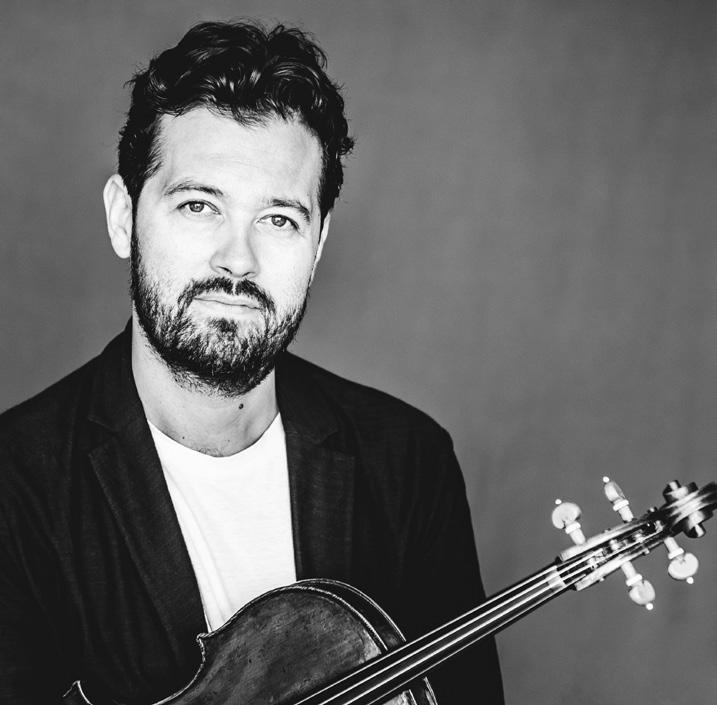
Internationally-acclaimed viola player Lawrence Power is widely heralded for his richness of sound, technical mastery and his passionate advocacy for new music. Lawrence has advanced the cause of the viola both through the excellence of his performances, whether in recitals, chamber music or concertos and the creation of the Viola Commissioning Circle (VCC), which has led to a substantial body of fresh repertoire for the instrument by today’s finest composers. Lawrence has premiered concertos by leading composers such as James MacMillan, Mark-Anthony Turnage, Julian Anderson, Alexander Goer, and through the VCC has commissioned works by Anders Hillborg, Thomas Adès, Gerald Barry, Cassandra Miller and Magnus Lindberg.
Lawrence is Resident Artist at the Southbank Centre in 2024/25, which commences with a recital with Thomas Adès featuring works by Adès, Britten, Dowland, Stravinsky and Berio where they will be joined by a percussionist and internationally renowned dancer and choreographer Jonathan Goddard. Further performances include the UK Premiere of Magnus Lindberg’s Viola Concerto with the Philharmonia Orchestra conducted by EsaPekka Salonen, a ‘Lock-in’ featuring live performance and cinematic projection and a newly commissioned project from creative studio Âme.
Lawrence enjoys play-directing orchestras from both violin and viola, most recently at the Edinburgh International Festival with Scottish Ensemble, Australian National Academy of Music and with Norwegian Chamber Orchestra and leads his own orchestra, Collegium, made up of fine young musicians from across Europe. He is on the faculty at Zurich’s Hochschule der Kunst and gives masterclasses around the world, including at the Verbier Festival.
As a chamber musician he is in much demand and regularly performs at Verbier, Salzburg, Aspen, Oslo and other festivals with artists such as Steven Isserlis, Nicholas Alstaedt, Simon Crawford-Phillips, Vilde Frang, Maxim Vengerov and Joshua Bell. Lawrence was announced in 2021 as an Associate Artist at the Wigmore Hall, a position lasting for five years, with artists performing at least once each season. For full biography
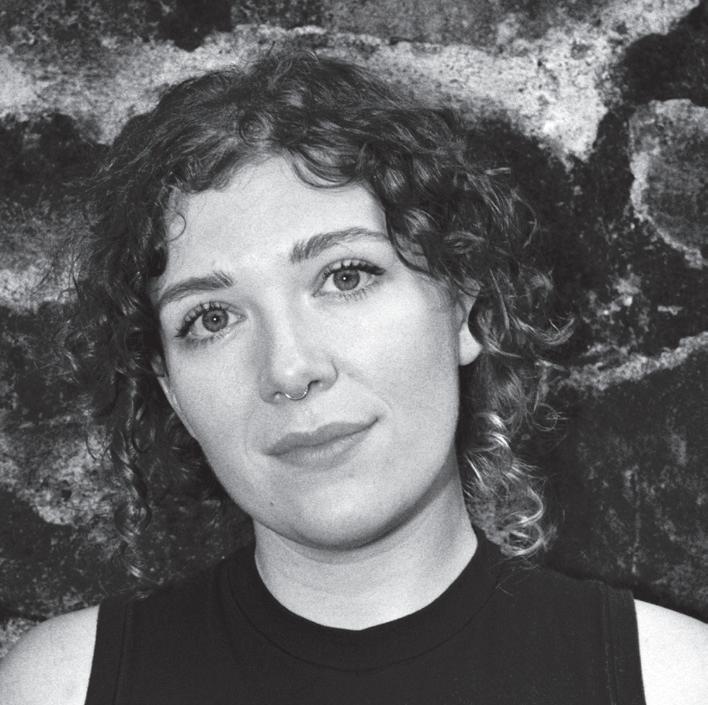
Rowan is a composer and DJ, working solo and in collaboration with dancers, visual artists and other musicians. With a particular affinity for vocals and extended vocal techniques, she intricately weaves together classical and electronic elements, crafting immersive sonic landscapes and pulsating rhythmic structures. Rowan is also a resident of Club Sylkie, a club night dedicated to and run by queer women and non binary people.

30 Jan (Edinburgh) & 31 Jan (Glasgow)
Parabola
13 Mar (Edinburgh) & 14 Mar (Glasgow)
Stretch your musical imagination and discover fresh sonic landscapes with some of the SCO’s most charismatic collaborators.
Come as you are, and come early to enjoy foyer music courtesy of our roster of Scottish DJ talent. Make a night of it, bring your friends, and stick around afterwards - the bar will be open for a fun, social concert debrief.
In association with

The Scottish Chamber Orchestra (SCO) is one of Scotland’s five National Performing Companies and has been a galvanizing force in Scotland’s music scene since its inception in 1974. The SCO believes that access to world-class music is not a luxury but something that everyone should have the opportunity to participate in, helping individuals and communities everywhere to thrive. Funded by the Scottish Government, City of Edinburgh Council and a community of philanthropic supporters, the SCO has an international reputation for exceptional, idiomatic performances: from mainstream classical music to newly commissioned works, each year its wide-ranging programme of work is presented across the length and breadth of Scotland, overseas and increasingly online.
Equally at home on and off the concert stage, each one of the SCO’s highly talented and creative musicians and staff is passionate about transforming and enhancing lives through the power of music. The SCO’s Creative Learning programme engages people of all ages and backgrounds with a diverse range of projects, concerts, participatory workshops and resources. The SCO’s current five-year Residency in Edinburgh’s Craigmillar builds on the area’s extraordinary history of Community Arts, connecting the local community with a national cultural resource.
An exciting new chapter for the SCO began in September 2019 with the arrival of dynamic young conductor Maxim Emelyanychev as the Orchestra’s Principal Conductor. His tenure has recently been extended until 2028. The SCO and Emelyanychev released their first album together (Linn Records) in November 2019 to widespread critical acclaim. Their second recording together, of Mendelssohn symphonies, was released in November 2023. Their latest recording, of Schubert Symphonies Nos 5 and 8, will be released in November.
The SCO also has long-standing associations with many eminent guest conductors and directors including Principal Guest Conductor Andrew Manze, Pekka Kuusisto, François Leleux, Nicola Benedetti, Isabelle van Keulen, Anthony Marwood, Richard Egarr, Mark Wigglesworth, Lorenza Borrani and Conductor Emeritus Joseph Swensen.
The Orchestra’s current Associate Composer is Jay Capperauld. The SCO enjoys close relationships with numerous leading composers and has commissioned around 200 new works, including pieces by Sir James MacMillan, Anna Clyne, Sally Beamish, Martin Suckling, Einojuhani Rautavaara, Karin Rehnqvist, Mark-Anthony Turnage, Nico Muhly and the late Peter Maxwell Davies.







At the SCO, we deeply value our incredible community of regular donors.
Each year, we must raise £1.2 million to continue delivering outstanding musical performances on-stage and innovative education and community work off-stage. Every donation has a positive impact on our work, and, in return, we bring our donors closer to the Orchestra and our wonderful array of visiting artists.
For more information on how you can become a regular donor, please get in touch with Hannah on 0131 478 8364 or hannah.wilkinson@sco.org.uk
sco.org.uk/support-us